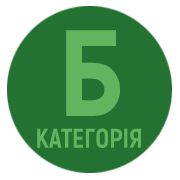ФІЗИКО-ХІМІЧНІ ВЛАСТИВОСТІ ҐРУНТІВ ДОЛИНИ РІЧКИ СТАВЧАНКА В МЕЖАХ МІСТА ПУСТОМИТИ
DOI:
https://doi.org/10.32782/naturalspu/2024.1.18Ключові слова:
органогенні і мінеральні ґрунти, долина річки, фізико-хімічні властивості ґрунтів.Анотація
Досліджено фізико-хімічні властивості ґрунтів долини річки Ставчанки в межах міста Пустомити, а саме: вміст гумусу, зольність, кислотно-основні властивості, суму увібраних основ і ступінь насичення ґрунтів основами. Річка Ставчанка є лівою притокою другого порядку річки Дністер. Установлено, що досліджувані мінеральні дернові та лучні ґрунти належать до низько- та середньо гумусних. Таку низьку гумусованість можна пояснити високим вмістом піщаної фракції та легкосуглинковим гранулометричним складом, що не дозволяє затримуватись новоутвореним гумусовим речовинам у верхньому горизонті, тому відбувається поступове їх транспортування в нижчі горизонти. Ґрунти характеризуються прогресивно-акумулятивним розподілом вмісту гумусу за профілем. Органогенні торфовища низинні є середньозольними за вмістом золи, а також зазначено динаміку до зниження зольності вниз за профілем. Відносно великий показник зольності в досліджуваних торфовищах низинних можна пояснити близькістю їх до русла річки Ставчанки та низьким гіпсометричним рівнем залягання цих ґрунтів над рівнем води в руслі річки, що приводить до періодичного поповнення на їх поверхні мінеральними речовинами, привнесеними в завислому стані паводковими та повеневими водами під час розливу річки. Реакція ґрунтового розчину коливається від дуже кислої в торфовищах, до нейтральної – у нижніх горизонтах дернових і лучних ґрунтів. Ступінь гідролітичної кислотності коливається в широких межах – від дуже низького в дернових і лучних ґрунтах, до дуже високого – у торфовищах низинних. Показник суми ввібраних основ є середнім у дернових і підвищений – у лучних ґрунтах. Ступінь насичення основами підвищений у межах усього профілю мінеральних ґрунтів. Отримані результати досліджень стануть у пригоді землевласникам і землекористувачам території досліджень під час ведення науково обґрунтованої господарської діяльності на цих землях. Результати досліджень уже стали у пригоді під час правильного вибору деревних культур (модрини європейської, дуба черешчатого, сосни чорної та липи вузьколистої) для створення рекреаційної зони в долині річки Ставчанки.
Посилання
Андрущенко Г.О. Ґрунти Західних областей УРСР. Львів ; Дубляни : Вільна Україна, 1970. 181 с.
Гаськевич В.Г., Нецик М.В. Торфові ґрунти Малого Полісся : монографія. Львів : ЛНУ імені Івана Франка, 2015. 198 с.
Гаськевич В.Г., Павлюк Н.М. Сірі лісові ґрунти Опілля : монографія. Львів : ЛНУ імені Івана Франка, 2011. 322 с.
Ґрунти Львівської області : колективна монографія / ред. С.П. Позняк. Львів : ЛНУ імені Івана Франка, 2020. 424 с.
Наконечний Ю.І., Позняк С.П. Ґрунти заплави ріки Західний Буг : монографія. Львів : ЛНУ імені Івана Франка, 2011. 220 с.
Наконечний Ю.І. Практикум із ґрунтознавства і географії ґрунтів. Львів : Видавничий центр ЛНУ імені Івана Франка, 2012. 374 с.
Позняк С.П. Ґрунтознавство і географія ґрунтів : підручник : у 2 ч. Ч. 1. Львів : ЛНУ імені Івана Франка, 2010. 270 с.
Трускавецький Р.С. Торфові ґрунти і торфовища України. Харків : Міськдрук, 2010. 278 с.







